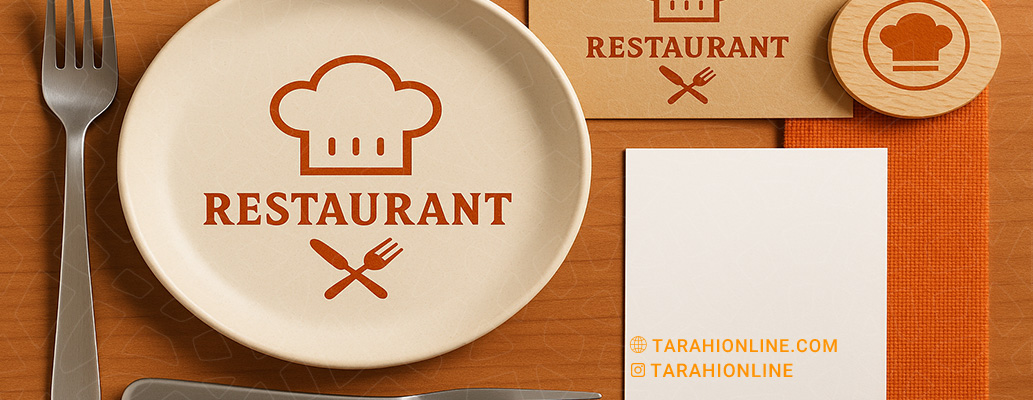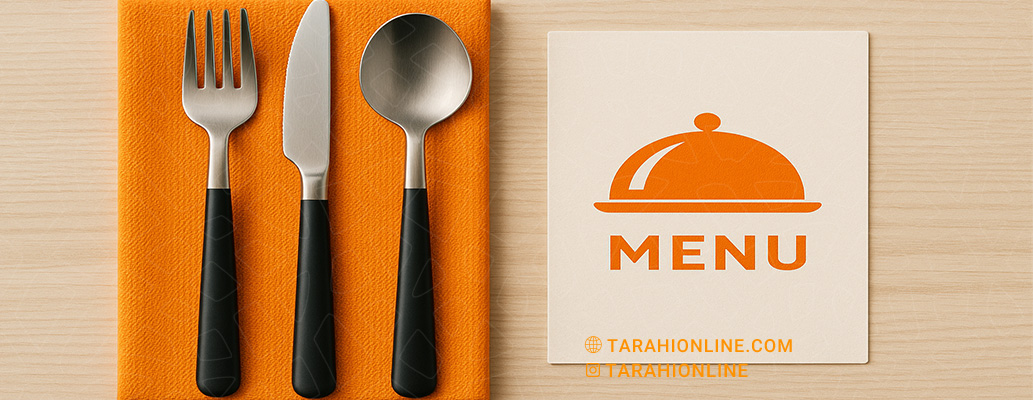
A logo is one of the most critical elements of a restaurant’s visual identity. A well-designed logo should not only be attractive and memorable but also effectively convey the restaurant’s values, cuisine type, and ambiance. Choosing the right logo style depends on various factors, including the restaurant’s type, target audience, and brand message. In this article, we explore different logo styles and key considerations for selecting the perfect logo for a restaurant.
Why Is a Logo Important for a Restaurant?
A logo serves as the visual face of a brand, playing a pivotal role in creating a lasting first impression. A professional and fitting logo can:
-
Strengthen brand identity: A logo helps customers remember your restaurant.
-
Build trust: A well-crafted logo reflects quality and professionalism.
-
Create differentiation: In a competitive market, a logo sets your restaurant apart from competitors.
-
Convey the brand message: A logo communicates the type of cuisine, culture, or atmosphere of the restaurant.
Different Logo Styles for Restaurants
Various logo styles can suit different types of restaurants. Below, we explore some popular styles and their applications:
1. Classic and Traditional Logo
Characteristics:
-
Use of serif fonts (e.g., Times New Roman or similar) to evoke a sense of heritage and authenticity.
-
Warm, classic colors like deep red, gold, or dark green.
-
Incorporation of traditional symbols such as crowns, cutlery, or food imagery.
Suitable for:
-
Traditional and family-oriented restaurants.
-
Restaurants serving local or cultural cuisines (e.g., Persian, traditional Italian).
-
Upscale and formal dining establishments.
Example: A Persian restaurant serving traditional dishes like kebabs or stews might use a logo with Nastaliq calligraphy and intricate Islamic patterns to convey authenticity and cultural heritage.
2. Modern and Minimalist Logo
Characteristics:
-
Use of sans-serif fonts (e.g., Helvetica or Montserrat) that are clean and readable.
-
Neutral or monochromatic color schemes (e.g., black, white, or gray).
-
Simple designs with clean lines and minimal details.
Suitable for:
-
Modern and trendy restaurants.
-
Cafés and fast-food restaurants targeting younger audiences.
-
Restaurants offering international or fusion cuisine.
Example: A modern café in a city center might use a minimalist logo with a simple font and a subtle icon, such as a coffee cup or a leaf.
3. Handwritten and Artistic Logo
Characteristics:
-
Use of handwritten or calligraphy-style fonts to create a personal and friendly feel.
-
Bright, warm colors like orange, yellow, or pink.
-
May include cartoonish or hand-drawn elements.
Suitable for:
-
Small, cozy restaurants.
-
Local cafés or restaurants with a friendly atmosphere.
-
Restaurants serving homemade or organic food.
Example: A small restaurant offering homemade soups and traditional dishes might use a handwritten font with an image of a soup bowl to create a warm, inviting vibe.
4. Iconic (Symbolic) Logo
Characteristics:
-
Focus on a strong, recognizable symbol or icon that can stand alone.
-
Use of imagery related to food or culture (e.g., plates, glasses, or ingredients).
-
Can be with or without text.
Suitable for:
-
Chain restaurants or large brands.
-
Restaurants aiming for a simple yet impactful logo.
-
Fast-food restaurants or chain cafés.
Example: A fast-food restaurant might use a simple logo featuring a hamburger or fries, instantly recognizable to customers.
5. Vintage (Retro) Logo
Characteristics:
-
Inspired by retro aesthetics (e.g., 1950s or 1960s).
-
Use of muted or nostalgic color palettes like mustard yellow, olive green, or brown.
-
Classic fonts or nostalgic graphic elements.
Suitable for:
-
Restaurants with a retro or nostalgic theme.
-
American-style diners or restaurants with a vintage vibe.
-
Cafés evoking an old-school atmosphere.
Example: A 1960s-themed diner might use a bold font and a classic image like a milkshake glass to create a retro feel.
Key Considerations for Designing a Restaurant Logo
To choose or design an effective logo, keep the following tips in mind:
1. Understand Your Target Audience
-
Who is your audience? Is your restaurant designed for families, young people, or high-end customers? The logo should align with the audience’s tastes and expectations.
-
Example: For a family-oriented restaurant, a logo with warm colors and friendly imagery is ideal, while a luxury restaurant might benefit from a logo with dark colors and formal fonts.
2. Reflect the Cuisine and Culture
-
The logo should reflect the type of cuisine or cultural theme of the restaurant. For example, a Japanese restaurant might incorporate chopsticks or cherry blossoms into its logo.
-
Example: For a Persian restaurant, traditional patterns like tilework or Persian motifs can effectively convey cultural identity.
3. Simplicity and Legibility
-
The logo should be simple and recognizable, even at small sizes (e.g., on menus or business cards).
-
Use readable fonts and colors that stand out against various backgrounds.
4. Choose the Right Colors
-
Red: Appetite-stimulating and ideal for fast-food restaurants.
-
Green: Represents freshness and is suitable for healthy or vegetarian restaurants.
-
Gold or Black: Conveys luxury and suits upscale establishments.
-
Bright Colors: Great for casual cafés and informal restaurants.
5. Versatility
-
The logo should work well across different media, from restaurant signage to social media.
-
Ensure the logo remains clear in monochrome or black-and-white formats.
6. Avoid Clichés
-
Avoid overused symbols like spoons, forks, or chef hats unless they are designed creatively.
-
The logo should be unique to stand out from competitors.
Steps to Design a Restaurant Logo
-
Research and Inspiration: Study logos of similar restaurants and competitors.
-
Brainstorm Ideas: Sketch initial concepts based on the restaurant’s type and audience.
-
Choose Fonts and Colors: Select a font and color palette that align with the brand identity.
-
Design an Icon or Symbol: If needed, create a symbol related to the restaurant.
-
Test and Gather Feedback: Test the logo in different sizes and media, and seek feedback from customers or designers.
-
Finalize: Make final adjustments and prepare logo files in various formats (e.g., PNG, SVG).
Examples of Successful Restaurant Logos
-
Starbucks: An iconic logo featuring the Siren, balancing simplicity and brand identity.
-
McDonald’s: The simple, memorable golden arches recognized worldwide.
-
Local Persian Restaurants: Some Persian restaurants, like Shater Abbas, use traditional calligraphy and motifs to convey authenticity.
Choosing the right logo style for a restaurant depends on factors such as the cuisine, target audience, and ambiance. A successful logo should be simple, memorable, and aligned with the brand’s identity. By considering styles like classic, modern, handwritten, iconic, or vintage and following key principles such as audience understanding, appropriate color choices, and versatility, you can create a logo that not only attracts customers but also effectively represents your restaurant’s identity.
The Tarahi Online graphic and logo design team, with over ten years of experience in professional graphic and logo design, is ready to assist you and bring your ideas to life. Contact us to submit your request or place an order.

